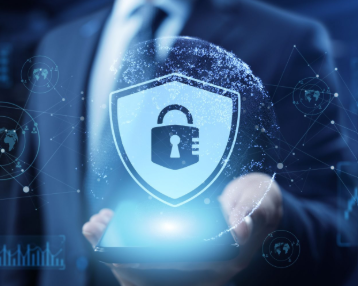CloudKit
Cyber Security
Cyber Security
Cybersecurity for Business: A Comprehensive Overview
Cybersecurity is critical for businesses of all sizes in today's digital economy. As companies increasingly rely on technology to operate and store sensitive data, the risk of cyberattacks grows. Here's what businesses need to know to protect their digital assets:
Why Cybersecurity Matters for Business
-
Protect Sensitive Data
Businesses handle confidential data like customer information, financial records, intellectual property, and employee data. A breach can result in theft, blackmail, or loss of trust. -
Maintain Business Continuity
Cyberattacks like ransomware or DDoS attacks can shut down operations. Good cybersecurity ensures minimal disruption. -
Regulatory Compliance
Laws like GDPR, HIPAA, CCPA, and PCI-DSS mandate strong data protection measures. Non-compliance can lead to heavy fines. -
Reputation Management
A security breach can erode customer trust and damage brand reputation, sometimes permanently. -
Financial Impact
Cybercrime costs businesses billions annually due to downtime, loss of data, legal costs, and ransom payments.
Key Areas of Cybersecurity for Businesses
1. Network Security
-
Firewalls, VPNs, intrusion detection/prevention systems.
-
Secure Wi-Fi and segmentation of networks.
2. Endpoint Security
-
Protect devices like laptops, phones, and servers using antivirus, encryption, and endpoint detection & response (EDR).
3. Cloud Security
-
Use reputable cloud service providers.
-
Implement identity and access management (IAM), encryption, and secure APIs.
4. Application Security
-
Regularly test and update software (patching).
-
Conduct code reviews and use security frameworks.
5. Identity & Access Management
-
Use strong password policies, multifactor authentication (MFA), and least-privilege access controls.
6. Data Security
-
Encrypt sensitive data at rest and in transit.
-
Regularly back up data and test recovery procedures.
Cybersecurity Best Practices for Businesses
-
Employee Training: Educate staff on phishing, safe browsing, and incident reporting.
-
Regular Updates & Patching: Keep software, firmware, and operating systems up to date.
-
Incident Response Plan: Develop and test a clear plan for responding to security breaches.
-
Vendor Risk Management: Assess the security practices of third-party vendors.
-
Continuous Monitoring: Use tools like SIEM (Security Information and Event Management) to detect threats in real time.
-
Penetration Testing: Conduct ethical hacking tests to uncover vulnerabilities.
Common Cyber Threats to Watch For
-
Phishing & Spear Phishing
-
Ransomware
-
Business Email Compromise (BEC)
-
Malware & Spyware
-
Zero-Day Exploits
-
Insider Threats
Cybersecurity for Different Business Sizes
| Business Size | Focus Areas |
|---|---|
| Small Businesses | Basic firewall, antivirus, backup, employee training |
| Medium Businesses | Centralized security policies, endpoint protection, vulnerability scanning |
| Large Enterprises | Advanced threat detection, SOCs (Security Operations Centers), risk management teams |
Getting Started: Actionable Steps
-
Conduct a Cybersecurity Risk Assessment
-
Create a Security Policy and Acceptable Use Policy
-
Deploy Security Tools (Firewall, Antivirus, MFA)
-
Train Employees Regularly
-
Partner with a Managed Security Service Provider (MSSP) if in-house resources are limited.
Our Expertise
- Site Survey
- Consultancy Work
- Project Management
Couldn't load pickup availability
Share


